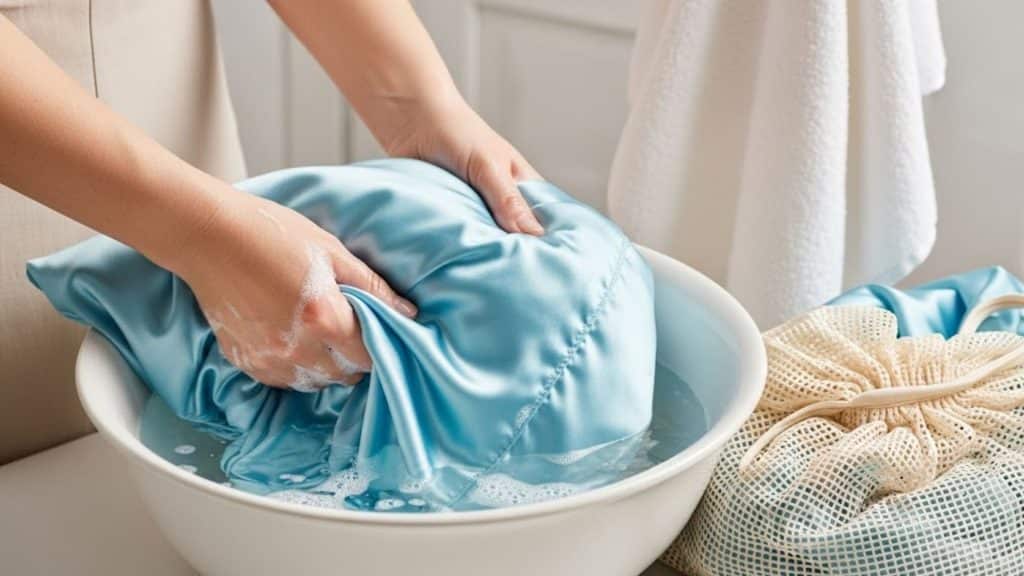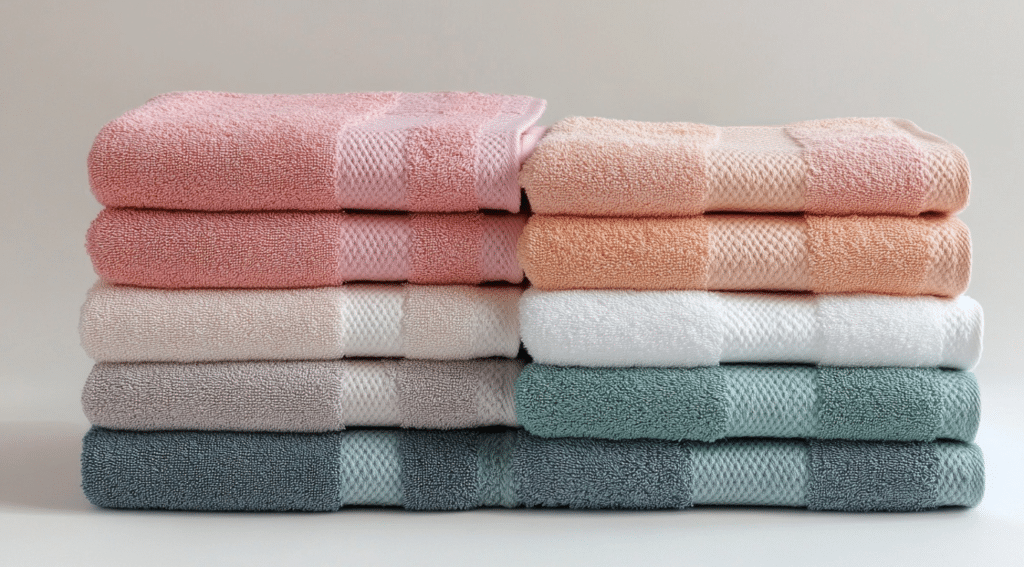Are you struggling with damaged satin pillowcases and want to know how to wash satin pillowcases without ruining the soft fabric? You’re not the only one thinking about the best way to clean these luxurious bedding essentials without destroying their silky texture.
Many people accidentally damage their expensive satin pillowcases by treating them like regular cotton fabric, resulting in frustrating outcomes. Your investment in quality bedding deserves proper care and attention to maintain that smooth, gorgeous feel you love so much.
Learning the right washing techniques will save you money and keep your pillowcases looking brand new for much longer.
Why Properly Washing Satin Pillowcases is Important
Satin pillowcases require special care due to their thin fibers, which can easily become damaged. When you wash satin the wrong way, several problems can happen that ruin your pillowcase forever.
Hot water and harsh detergents can cause the beautiful colors to fade and look dull. Rough washing methods create wrinkles that are almost impossible to remove from the smooth surface.
The fibers in satin fabric are much more fragile than regular cotton or polyester materials. Aggressive scrubbing or twisting can weaken these thin threads, causing them to break apart.
Once the fibers are damaged, your pillowcase loses its silky smoothness, which feels so good. Taking extra time to wash your satin pillowcase properly keeps it looking and feeling amazing.
How to Wash Satin Pillowcases: Step-By-Step Process
Washing satin pillowcases the right way keeps them soft, smooth, and long-lasting. Follow these simple steps to clean them gently without causing damage:
Material You’ll need
Washing a satin pillowcase requires a few basic materials. Below is a list of materials and their estimated cost to ensure your pillowcase is cleaned gently and effectively.
| Material | Estimated Cost Range |
|---|---|
| Mild, bleach-free detergent | $3 – $10 (small bottle) |
| White vinegar (optional) | $2 – $6 (16–32 oz bottle) |
| OxiClean (optional) | $3 – $8 (small tub/sachet) |
| Shampoo (optional) | $2 – $6 (budget brands) |
| Mesh laundry bag | $4 – $13 (single or multipack) |
| A towel for drying | $4 – $12 (basic value towel) |
NOTE: The costs provided are estimated and may vary based on location, brand, and availability. Always check current prices.
Step 1: Spot Clean Stubborn Stains
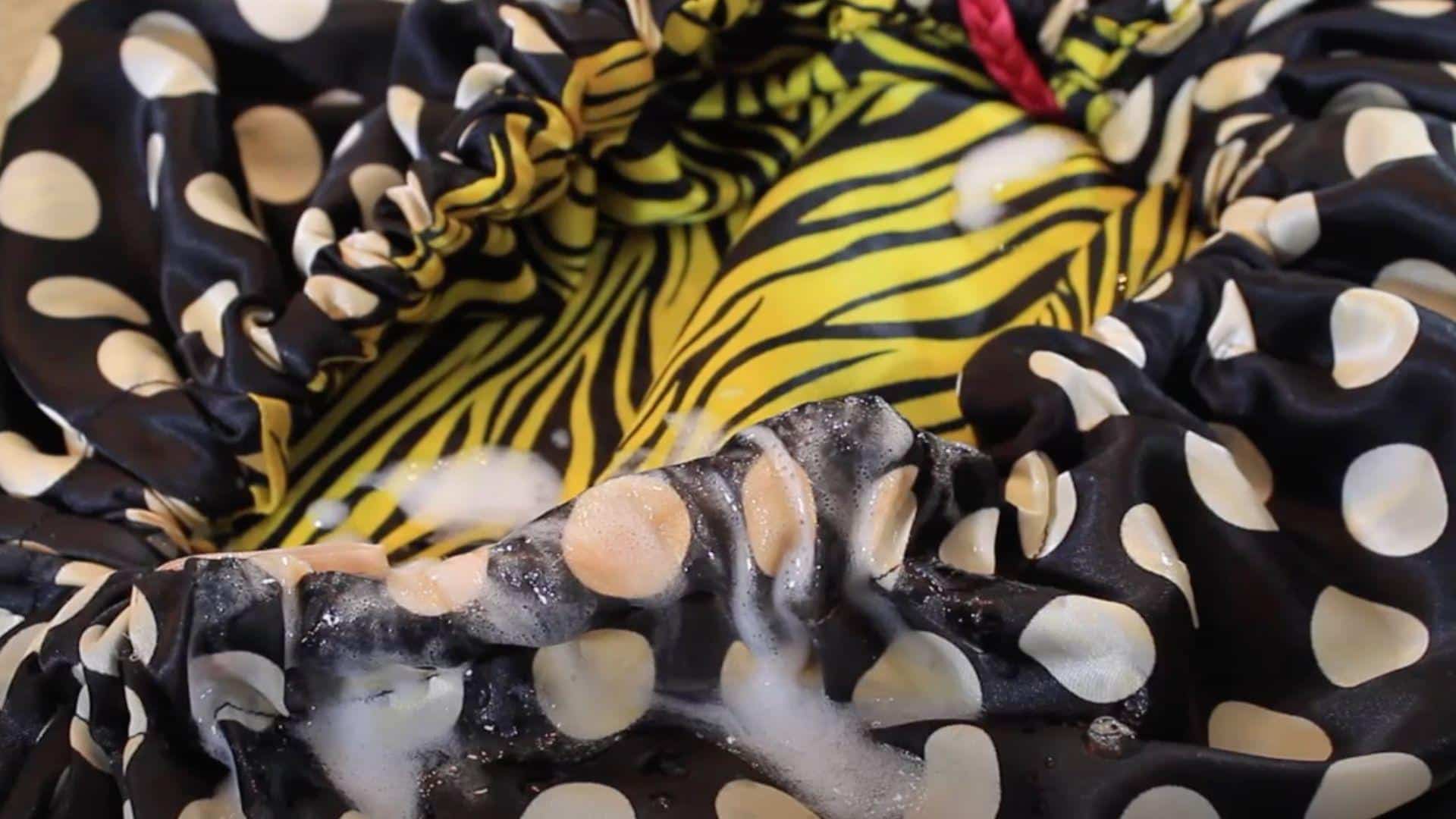
Before washing your satin pillowcase, use a mixture of one part white vinegar and one part water to target stains. For tough spots, try using OxiClean or mild shampoo.
Spray the solution onto the stained areas and let it sit for a few minutes. Gently blot the stain, being careful not to scrub the fabric. This helps to lift dirt without causing damage.
Laundry Tips
- Test on a small area before full application.
- Avoid rubbing or scrubbing to prevent fabric damage.
- Spot clean for better stain removal results.
Step 2: Hand Wash the Pillowcase
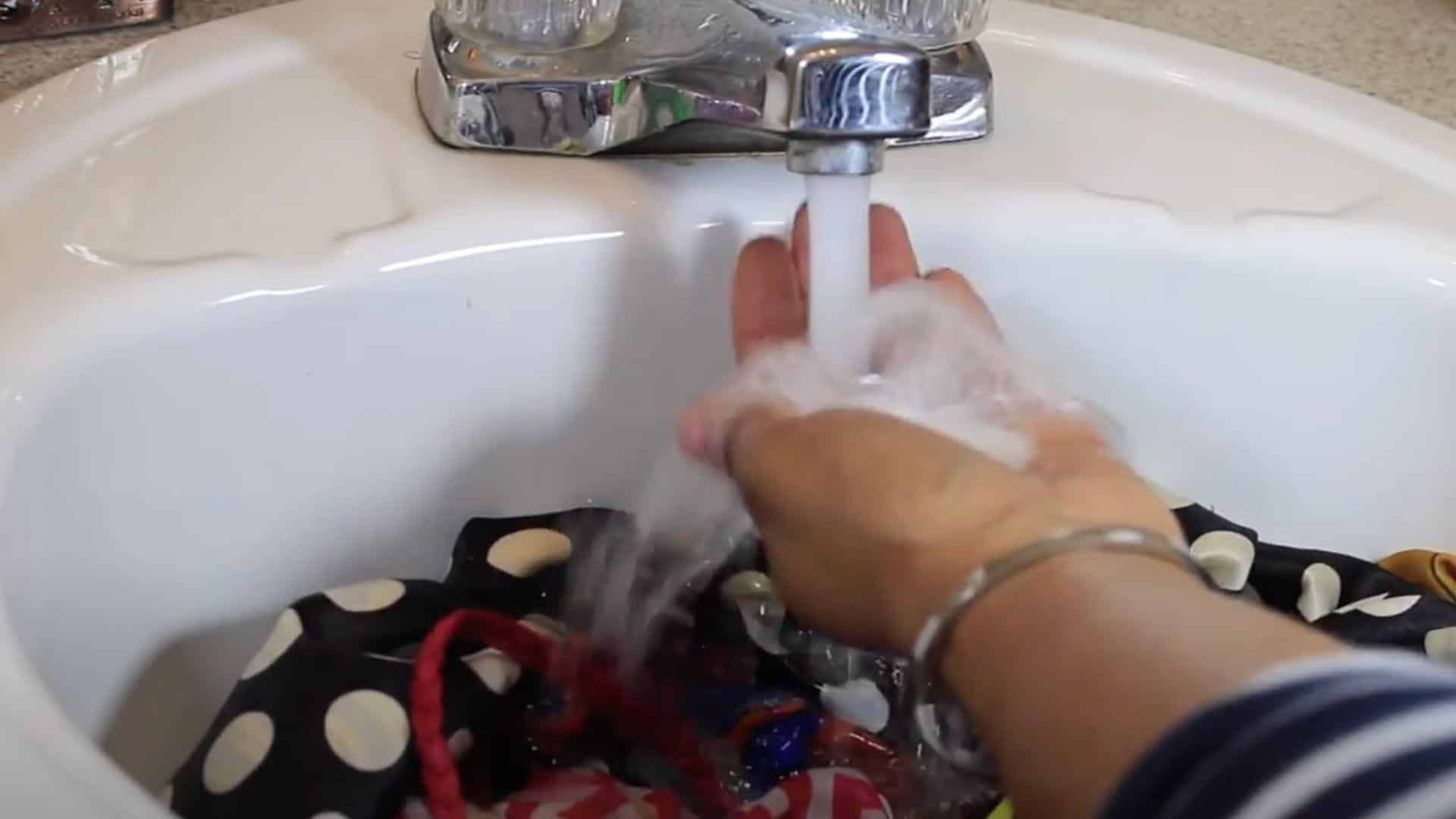
Fill a basin or sink with cool or lukewarm water. Add a small amount of mild, bleach-free detergent. Turn the satin pillowcase inside out to protect the fabric from damage. Gently agitate the water, but avoid twisting or wringing the pillowcase.
This helps keep the thin fibers intact while ensuring the pillowcase gets clean. Hand washing is gentler than machine washing.
Laundry Tips
- Rinse the pillowcase thoroughly to remove all soap and prevent buildup on the fabric.
- Press the water out gently using a towel instead of squeezing it by hand
- Wash satin items separately to avoid snags from rougher fabrics.
Step 3: First Rinse
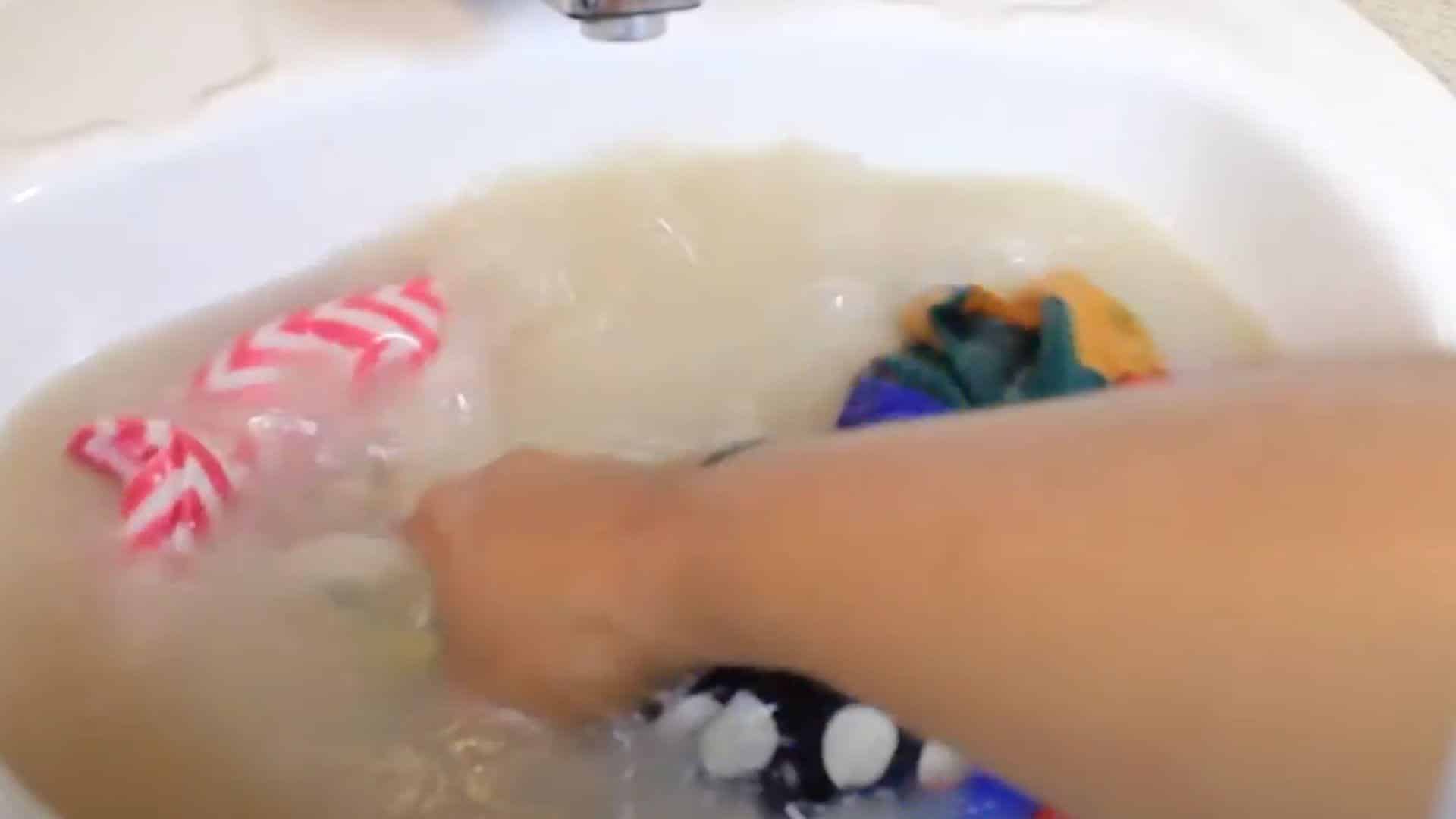
Once washing is complete, gently press out the excess dirty water from your satin pillowcase. Do not twist or wring it.
Allow the water to drain fully before proceeding with the second rinse. This helps eliminate most of the detergent and dirt. A good first rinse ensures the fabric is ready for a thorough second clean.
Laundry Tips
- Rinse each pillowcase separately to avoid cross-contamination from other fabrics
- Ensure most dirt is removed during the first rinse.
- Lightly shake the pillowcase after rinsing to loosen any trapped residue.
Step 4: Second Rinse
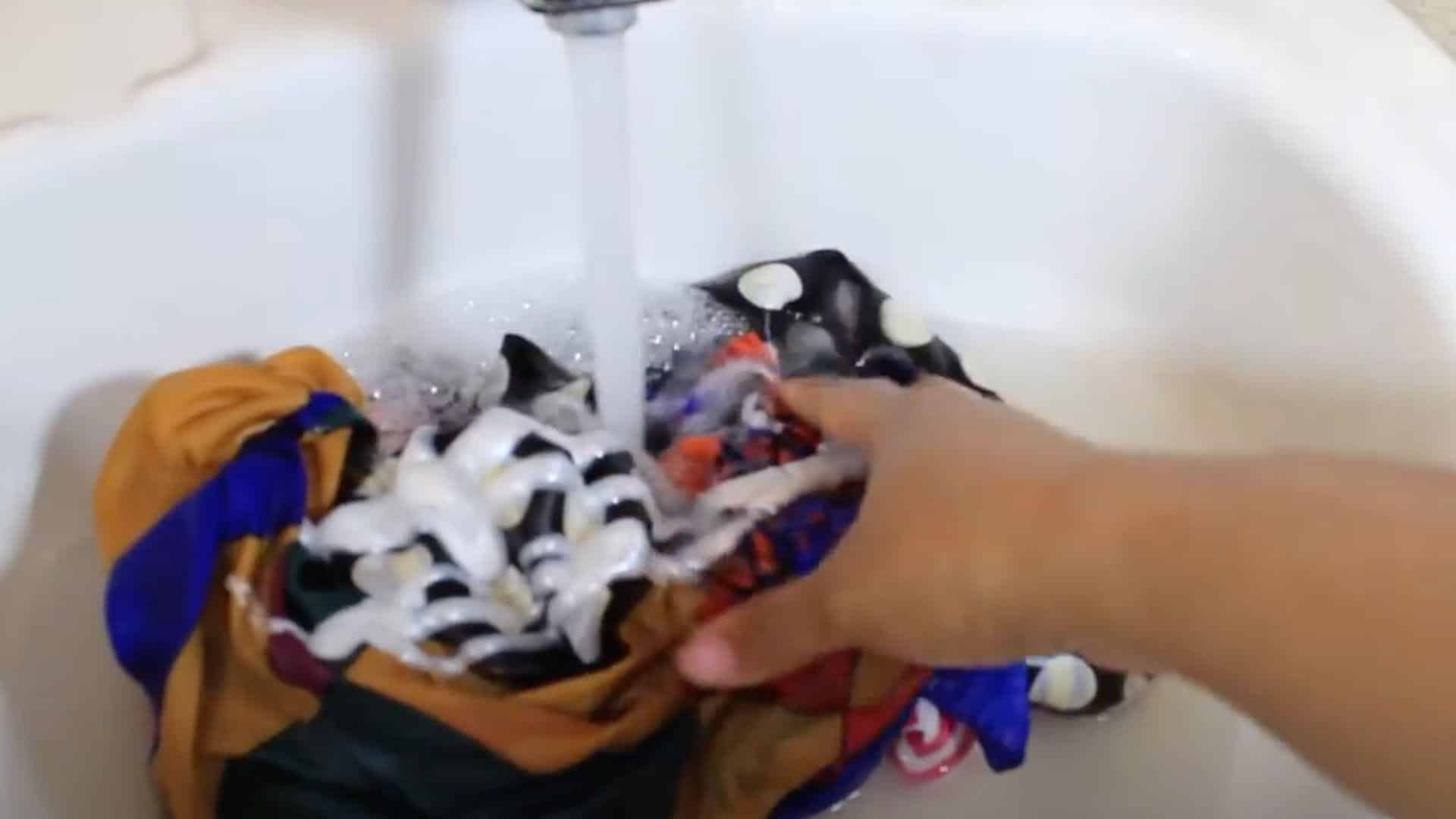
For the second rinse, fill the basin with cool water and add a bit of shampoo. Gently swish it in the water, allowing the pillowcase to absorb the water.
This helps remove any remaining soap residue, ensuring the fabric is thoroughly cleaned and free from residue. The second rinse is crucial for thoroughly cleaning the satin fabric without detergent residue.
Laundry Tips
- Use a gentle shampoo to prevent damage to the fabric.
- Only use a small amount of shampoo to prevent excess suds.
- Swish the fabric gently, never scrub or twist.
Step 5: Dry the Pillowcase
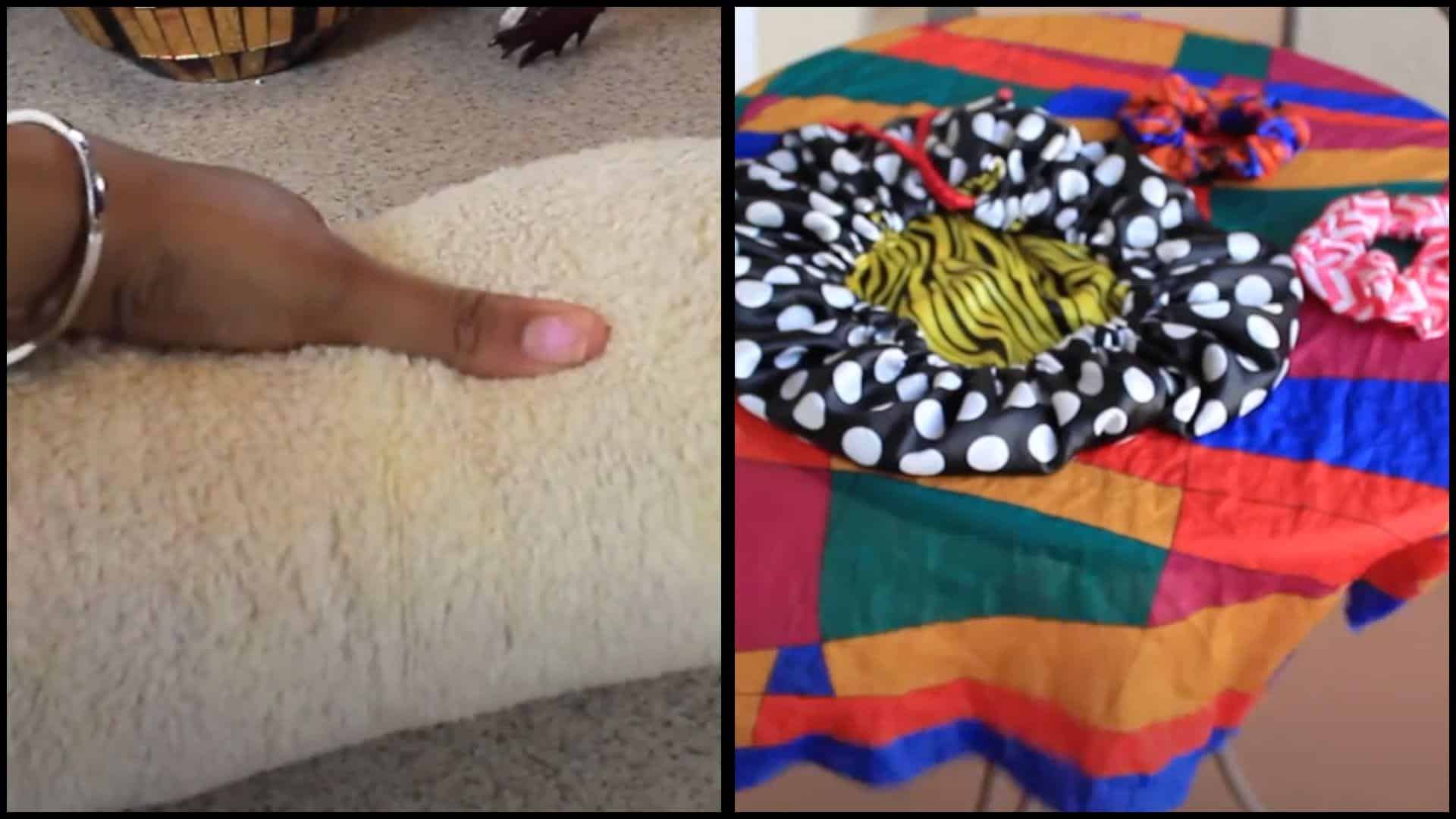
After rinsing, gently squeeze out excess water from the pillowcase. Lay the pillowcase flat on a clean, dry towel, and roll the towel to absorb moisture.
Once the excess water is absorbed, lay the pillowcase flat to air dry. Air drying helps preserve the satin fabric’s shape and prevents any shrinkage or damage from heat.
Laundry Tips
- Never dry your satin pillowcase in a dryer.
- Air dry your pillowcase flat to keep its shape intact.
- Use a clean, dry towel to help speed up the drying process.
How to Wash a Satin Pillowcase: Video Tutorial
For a more detailed walkthrough of the process, check out the complete video tutorial below:
Tips for Maintaining Satin Pillowcases
To keep your satin pillowcases in top condition, it’s important to follow a few key maintenance practices. These simple tips will help you maintain their softness and longevity without much effort:
- Wash satin pillowcases every 1-2 weeks to keep them smooth and shiny.
- Store satin pillowcases in a cool, dry place to maintain their freshness.
- Keep satin pillowcases away from direct sunlight to prevent fading.
- Use a satin pillowcase protector to prevent damage from makeup and oils.
- Avoid contact with rough fabrics or abrasive surfaces to prevent snags.
- Smooth out wrinkles by using a low-heat iron or steam after air drying.
Taking these simple steps can make a big difference in maintaining the quality of your satin pillowcases and extending their life. Proper care will help keep them looking as good as new for a longer period.
Common Mistakes to Avoid While Washing
To properly care for your satin pillowcases, avoid these common mistakes. By being aware of the mistakes people often make, you can protect the fabric and preserve its quality for longer.
- Washing with rough fabrics: Washing satin with items like towels or jeans can cause friction and damage the soft fibers.
- Using excessive detergent: Too much detergent can leave residue on satin, making it feel sticky or heavy.
- Not washing satin items separately: Mixing satin pillowcases with other fabrics can cause tangling and abrasion, which affects their smoothness.
- Skipping the pre-treatment for stains: Ignoring stains before washing can make them harder to remove and cause permanent discoloration.
- Drying in direct sunlight: Sun exposure can cause fading and weaken the fabric over time.
These simple mistakes can easily be avoided to ensure your satin pillowcases stay in great condition. Proper care makes a big difference in maintaining their softness and appearance.
Wrapping Up
Now you know precisely how to wash satin pillowcases safely and effectively without any guesswork or anxiety about damaging the fabric.
Your satin pillowcases will thank you for learning these techniques that preserve their beauty and significantly extend their lifespan. Remember that taking a few extra minutes during washing pays off with pillowcases that stay silky and beautiful for much longer periods.
I hope these simple steps help you feel confident about maintaining your luxurious bedding collection without any stress or worry. Your hair and skin will continue enjoying all the benefits of smooth satin night after night.
What’s your biggest challenge when caring for soft fabrics at home? Comment below and share your experiences with fellow satin lovers!

